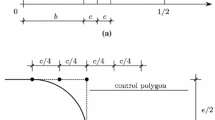Abstract
The paper considers the problem of damage detection arising in nondestructive testing. Applying currents on the boundary of a body and measuring the corresponding responses a conclusion should be made about the presence of damage inside the body.
The detection problem is formulated using a variational approach as a generalized eigenvalue problem. The maximal eigenvalue defines the accuracy of the measurements, which is necessary to detect this distribution of damage. The damage can be detected if there exists such a current in the set of the currents prescribed by the conditions of the experiment that generates perturbation on the boundary greater than the noise level in measurements.
To consider the worst case of detection, the damaged material should be distributed throughout the body in order to minimize the maximal eigenvalue of the spectral operator. An analytical estimate of the perturbation of the maximal eigenvalue is given, depending on the amount of damaged material.
Similar content being viewed by others
References
Cherkaeva, E.; Cherkaev, A. 1995: Bounds for detectability of material damage by noisy electrical measurements. In: Olhoff, N.; Rozvany G.I.N. (eds.)First World Congress of Structural and Multidisciplinary Optimization, pp. 543–548. Oxford: Pergamon
Cherkaeva, E.; Tripp, A.C. 1996: Source optimization in the inverse geoelectrical problem. In: Engl, H.W.; Louis, A.; Rundell, W. (eds.)Inverse problems in geophysical applications. Philadelphia: SIAM (in print)
Cherkaeva, E.; Tripp, A.C. 1996: Optimal survey design using focused resistivity arrays.IEEE, Trans. Geoscience and Remote Sensing 34, 358–366
Dobson, D.C. 1992: Estimates on resolution and stabilization for the linearized inverse conductivity problem.Inverse Problems 8, 71–81
Gisser, D.G.; Isaacson, D.; Newell, J.C. 1990: Electric current computed tomography and eigenvalues.SIAM J. Appl. Math. 50 1623–1624
Isaacson, D. 1986: Distinguishability of conductivities by electric current computed tomography.IEEE Trans. Med. Imaging MI-5, 91–95
Lurie, K.; Cherkaev, A. 1984: Exact estimates of conductivity of composites formed by two isotropically conducting media taken in prescribed proportion.Proc. Royal Soc. Edin. 99, 71–87
Sylvester, J.; Uhlmann, G. 1989: The Dirichlet to Neumann map and applications. In: Colton, D.; Ewing, R.; Rundell, W. (eds.)Inverse problems in partial differential equations, pp. 101–139. Philadelphia, SIAM
Author information
Authors and Affiliations
Rights and permissions
About this article
Cite this article
Cherkaeva, E. Optimal source control and resolution in nondestructive testing. Structural Optimization 13, 12–16 (1997). https://doi.org/10.1007/BF01198370
Received:
Issue Date:
DOI: https://doi.org/10.1007/BF01198370




